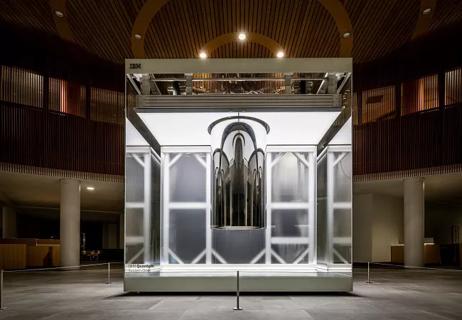Initiative generates new ideas for improving efficiency, eliminating waste

In an enterprise as large as Cleveland Clinic, there may be thousands of small but significant opportunities to make day-to-day operations more efficient and less expensive.
Advertisement
Cleveland Clinic is a non-profit academic medical center. Advertising on our site helps support our mission. We do not endorse non-Cleveland Clinic products or services. Policy
Believing that even minor changes could result in major savings, the hospital system launched Bright Ideas in 2024, an initiative designed to capitalize on the unparalleled expertise of its caregivers. The program encourages caregivers to submit their best cost-saving ideas to enterprise leadership through a simple online portal.
“Our goal is to give every caregiver a chance to contribute and be heard,” says Cinnamon Dixon, Sr. Director of HR Operations at Cleveland Clinic. “There's power in the voices of our caregivers, and Bright Ideas enables us to capture them in a succinct, user-friendly way.”
Once a suggestion has been received and routed to the correct division, it is reviewed for its feasibility. If the idea meets the program’s criteria, it progresses through a formal evaluation and implementation process.
Since its inception, the program has received 1,823 submissions – an average of 30 to 60 each month.
Dixon, who emphasizes that an idea must be attainable without compromising quality, patient care and compliance, outlines four additional criteria that must be addressed in each submission:
Impact. The resulting cost reduction or efficiency improvements should demonstrate measurable improvement.
Feasibility. The idea should be realistic and possible using current enterprise resources, staff and technology.
Timeframe. The resulting cost savings or efficiency gains should be achievable within a reasonable timeframe.
Quality. The idea should either maintain or enhance patient care, compliance and operational effectiveness.
Advertisement
According to Dixon, one of the most important aspects of the program is its broad accessibility.
While we provide employees with a variety of communication avenues, Bright Ideas is designed to capture important insights that might otherwise go unnoticed in our existing channels,” she explains.
Dixon says the program also exposes Cleveland Clinic leaders to cost-saving measures that have proved successful in different parts of the enterprise.
“We are a large organization, so it’s easy to miss positive changes that may be happening outside your specific unit or facility,” explains Paige Carlin, a Strategic Workforce Planner. This program is an important reminder of what we can accomplish when we all work together, and it honors the expertise of our caregivers by ensuring their very best ideas come to light.”
During the COVID-19 pandemic, for example, Cleveland Clinic Medina Hospital began using disposable blood pressure cuffs to reduce the risk of disease transmission. Spurred by an employee’s post-pandemic suggestion, the hospital switched to disinfected, reusable cuffs in 2024. In just six months, that simple change saved the hospital more than $11,000, Carlin notes.
Cleveland Clinic’s Senior Director of Healthcare Economics, Don McLellen, recently noticed another opportunity to reduce the cost of blood pressure cuffs. Some patients were being sent home with a cuff after each visit, leading many to accumulate the devices at home. Concerned about the effect this practice could have on the health system’s resources, McLellen submitted his observation to Bright Ideas. Within a few short months, caregivers had achieved better control over their cuff inventory.
Advertisement
Carlin reports that several themes have emerged since the program began, namely automation, process improvement and caregiver re-education regarding supply management.
One unit streamlined supply costs by moving to a lower-cost kit and aligning individual scissor pricing with the kit, resulting in a savings of $11,000.
Dixon attributes much of the program’s success to support from the institution’s top leaders, including President and CEO Tom Mihaljevic, MD, and K. Kelly Hancock, DNP, RN, NE-BC, FAAN, Executive Vice President, Chief Caregiver Officer and Chief Administrative Officer.
“They have championed Bright Ideas and are committed to hearing what caregivers have to say,” she adds.
Further lauding the insights her colleagues have shared through the program, Carlin says, “The success of Bright Ideas highlights how invested our caregivers are in the financial health of our institution – and in the well-being of the patients it serves.”
Advertisement
Advertisement

Insights from Cleveland Clinic’s Vice Chair of Innovation and Technology

Cleveland Clinic launches Quantum Innovation Catalyzer Program to help start-up companies access advanced research technology

Lupus Clinic providers collaborate to advance treatment and understanding

As the U.S. has seen an increase in respiratory-related morbidity and mortality, supporting future respiratory researchers has become imperative

New study sheds light on national trends in urology residency, former CCLCM alum comments

How hospitals can weave ethics into daily nursing practice to strengthen patient-centered care

Strategies for building connections, staying present

Annual event galvanizes leaders and inspires excellence